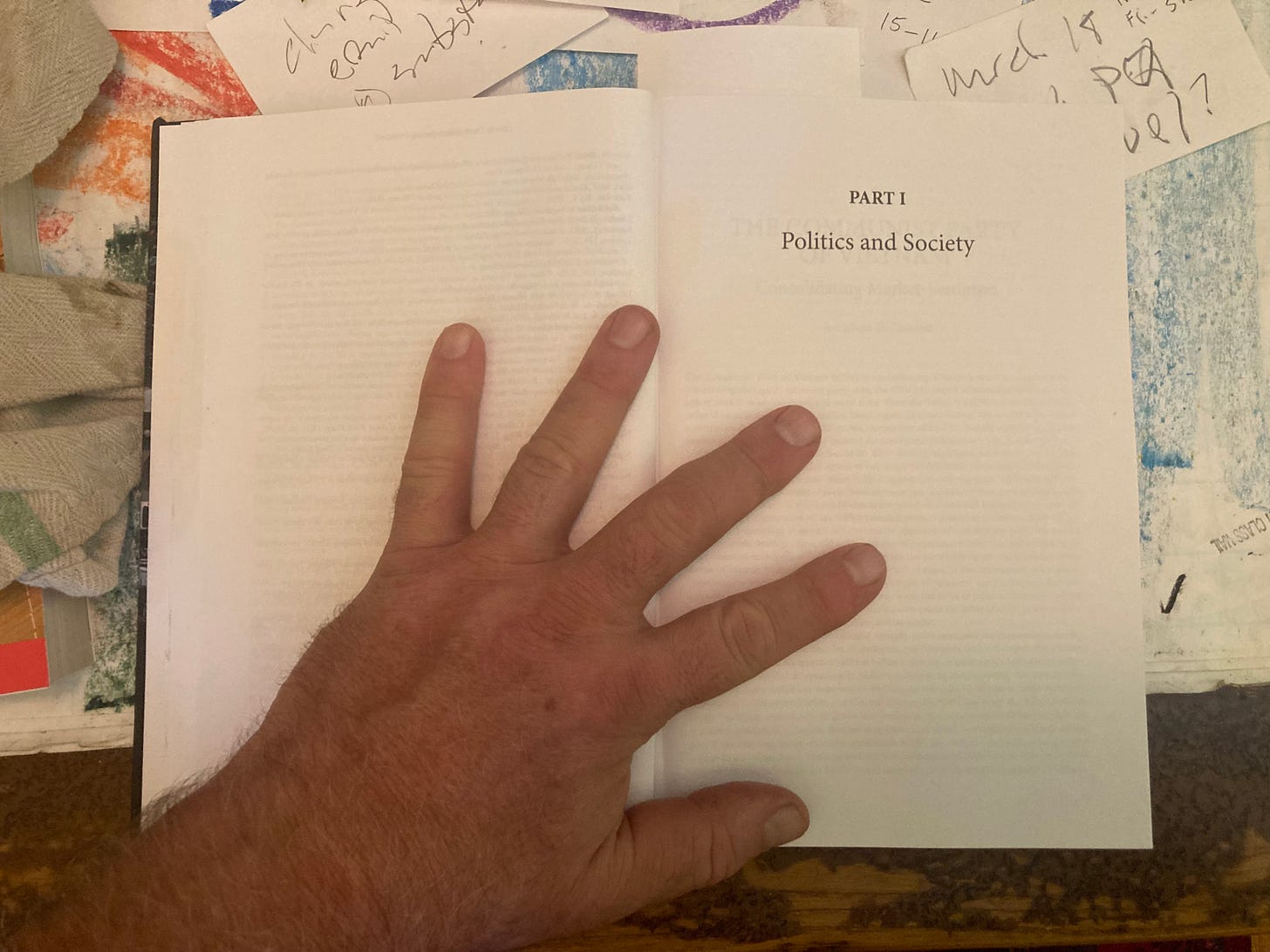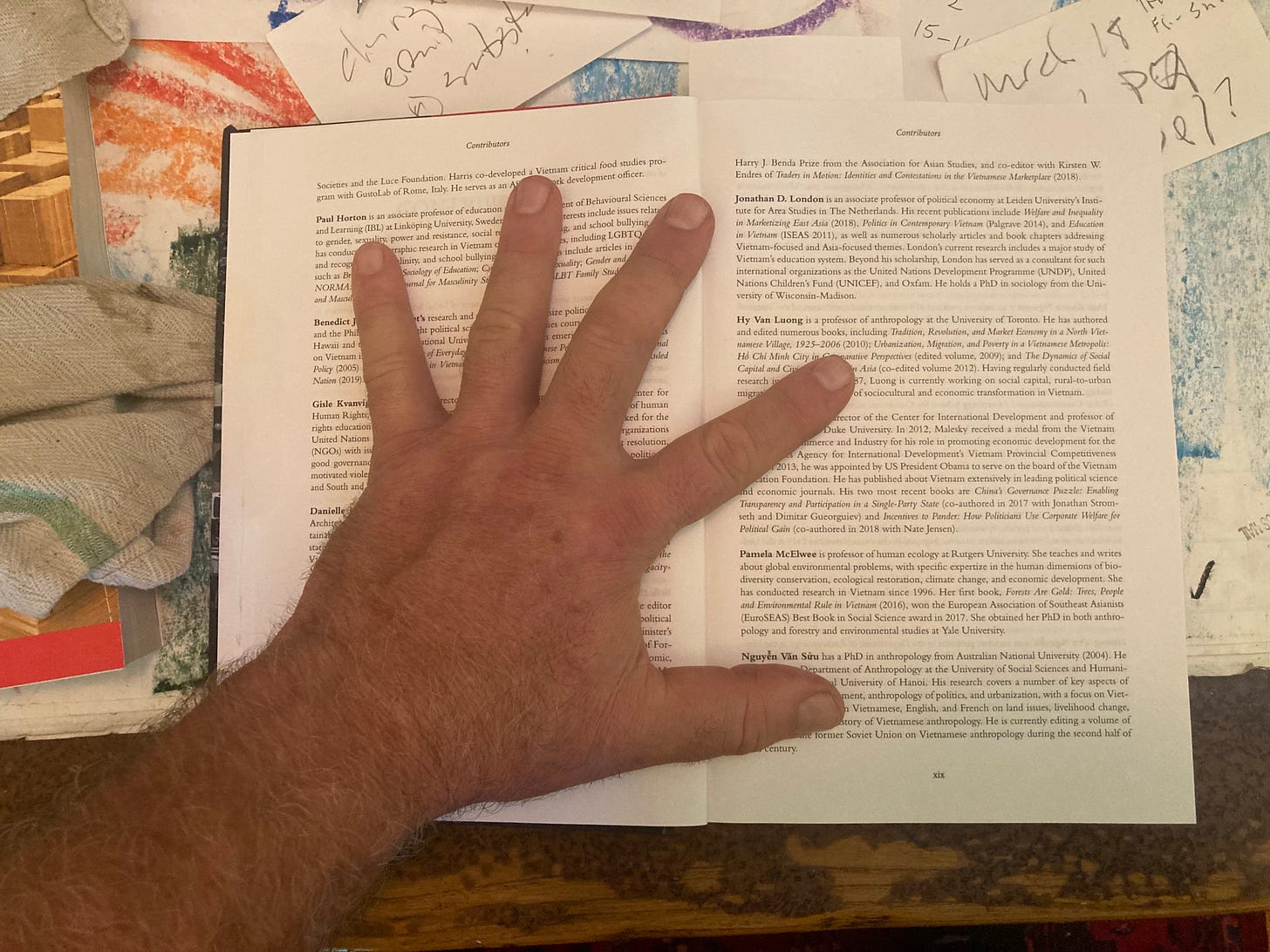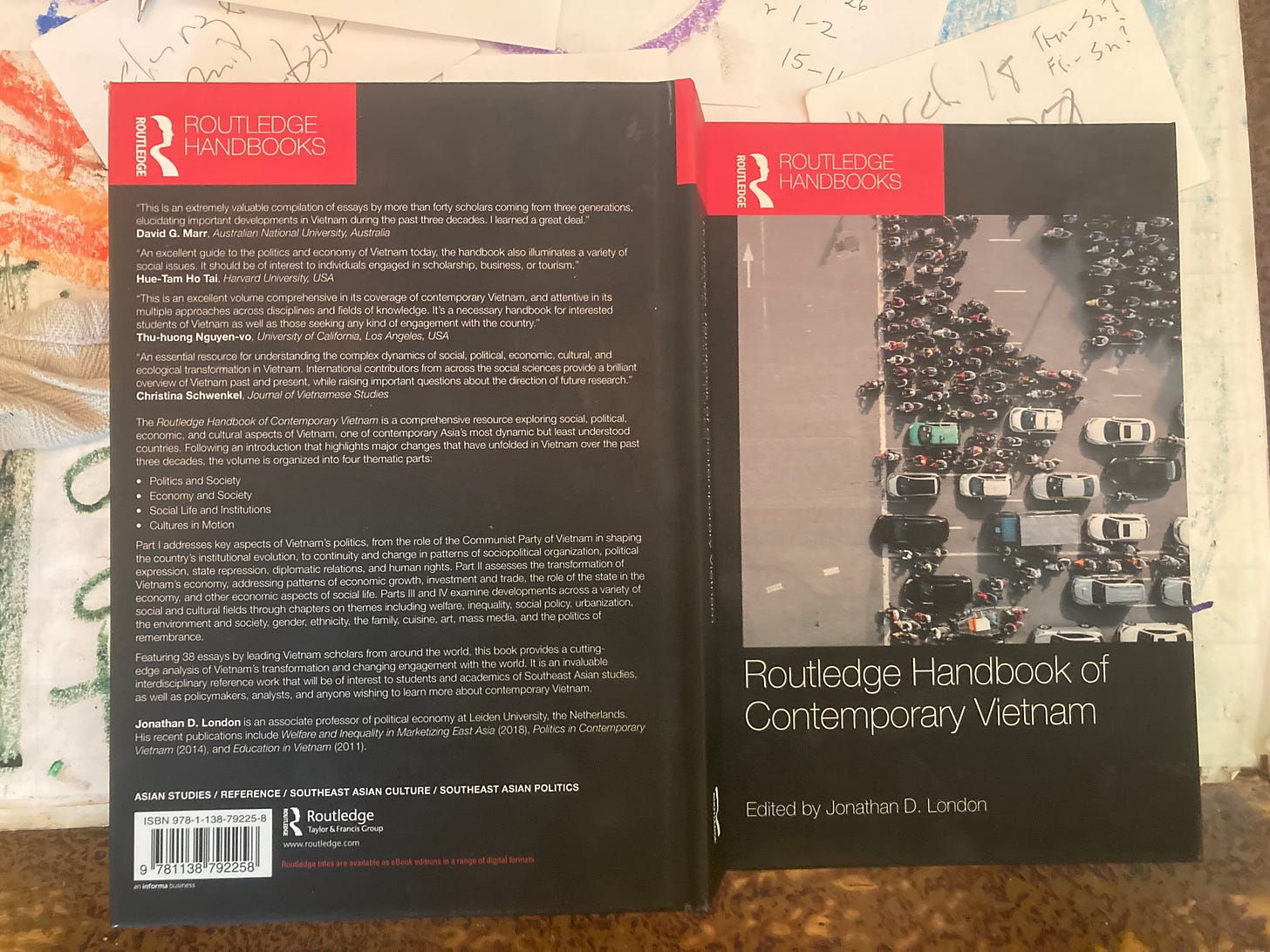Routledge Handbook of Contemporary Vietnam (iv) and The Communist Party of Vietnam (i)
from sociologist Jonathan D. London and Vietnamese studies
Bao Dai handed over the seal and sword of the Nguyen dynasty before the crowd assembled at Ba Dinh square in Ha Noi in 1945. A man born the same years as my grandparents accepted these sovereign tokens and acknowledged his reign name of Ho Chi Minh, whose remains today lie in state there.
He had founded his party as a youth group in Canton 20 years beforehand, 5 years after founding, with many others, France’s own Communist party. He then left to advance Communism from the Union of Soviet Socialist Republics,
and from China before raiding fascists and running a ratline for the United States of America out of northern Tonkin. After unveiling himself at Ba Dinh in 1945 his party conquered and unified the same Viet Nam that Gia Long had first won for the Nguyen around 1800.
Today, nearly 50 years after victory in 1975, nearly 100 after founding in 1925, longer than the Nguyen ruled independently, the people have stood in line since 1975 to pay respect to the body guarded by their government, under the leadership of his Vietnamese Communist Party. I call them the Ho dynasty.
Jonathan London calls them the Communist Party of Viet Nam (CPV) as I, come to think of it, refer to the Communist Party of the United States of America (CPUSA). I could quibble that our CP was within the USA while the VC created the Democratic Republic of Viet Nam then the Socialist one,
but Jonathan is a sociologist and his way points to comparison between homologous institutions. My VCP suggests instead the Viet Cong, the opponent to the Republic of Viet Nam. But we mean the same thing, as those in the Pentagon who wrote in their papers about North Viet Nam did not.
Life from the single cell up is homeostasis, maintaining a structure in a changing environment. As we reproduce our structure changes. No institution is human in the sense of alive but every one is a shared way for individuals to average risk so we may live to reproduce. One of those standing waves in statistics we take for reality
because what else is there. Domination by Paris, rivalry with other anti-colonialists, occupation by Tokyo, occupation by the United Kingdom, by one Chinese army, famine, war with France, war with Saigon and the USA, juggling another China and Moscow, famine, the fall of the Soviet Union, the rise of world markets, in a word,
history: one damned thing after another. Through change, accelerated change, and the accelerating rate of acceleration, the Ho have worked to lead their Viet Nam since 1925. In history that may be a presentist way of looking at things, ignoring paths not taken and slighting rivals defeated,
but institutionally it is just a fact. My sense that Viet Nam is as old as the United States, a matter of contact in the world system gelling into nations around 1800, or seeing the country rather as developing through the common era because we have cool Dong Son drums, or back 2 thousand more years because
you work for a government who says so are analytic and narrative periodizations. But the reign of the Vietnamese Communist Party is a natural fact like a slime mold. Maybe you don’t like it. Maybe you think it is not quite a multi-cellular organism. But if you have any truck with the Socialist Republic of Viet Nam, there it is.
If you are consulting a handbook of contemporary Viet Nam because you haven’t yet entered the realm of the Ho, Jonathan lays it out for you. The Communists are everywhere, more than ever. They are still haranguing the public through loudspeakers and no one seems to mind. They have meetings endless meetings in every walk of life.
This was the fourth Viet Nam letter of 4 so far addressed to The Routledge Handbook of Contemporary Vietnam, edited by Jonathan D. London. The first went out on January 5, 2023 and the second on January 14, 2023.
The third went out on February 10, 2023. This fourth was also the first of 1 so far on The Communist Party of Vietnam, also by Jonathan D. London.
Viet Nam letters respects the property of others under paragraph 107 of United States Code Title 17. If we asked for permission it wouldn’t be criticism. We explain our fair use at length in the letter of September 12, 2022.









